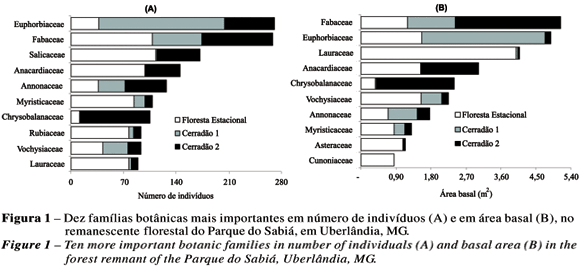The study evaluated the tree component structure of vegetation fragments consisted of semideciduous forest, two woody savannas (cerradão), inserted in an urban forest remnant, also consisting of a fragment of swamp forest. The survey comprised 1.32 hectares, where all trees with ³ 5 cm perimeter at breast height were recorded. A total of 141 species distributed in 46 botanical families with Shannon diversity index of 3.99 were recorded. Fabaceae showed the greatest species richness in the survey, corroborating the pattern found in other studies on the Cerrado Biome. Maprounea guianensis had the largest density, frequency and dominance relative values in the remnant. The semideciduous forest presented the largest floristic richness and characteristic species of that formation when compared with other studies. Hirtella glandulosa showed the largest importance value in the cerradão 2, suggesting the existence of a dystrophic soil in this physiognomy. The similar structural characteristics between cerradão 2 and semideciduous forest, tree species diversity significantly larger in cerradão 2 than in cerradão 1, besides the presence of typical species of swamp forests and semideciduous forest in cerradão 2 confirm the occurrence of transition areas in the remnant. Few individuals were recorded in the smallest diameter classes in cerradão 1. Continuous and varied human disturbances probably are responsible for this, indicating the need for conservation and management preventive actions of this biological patrimony.
Transition areas; woody savanna; phytosociology; semideciduous forest; municipal park




